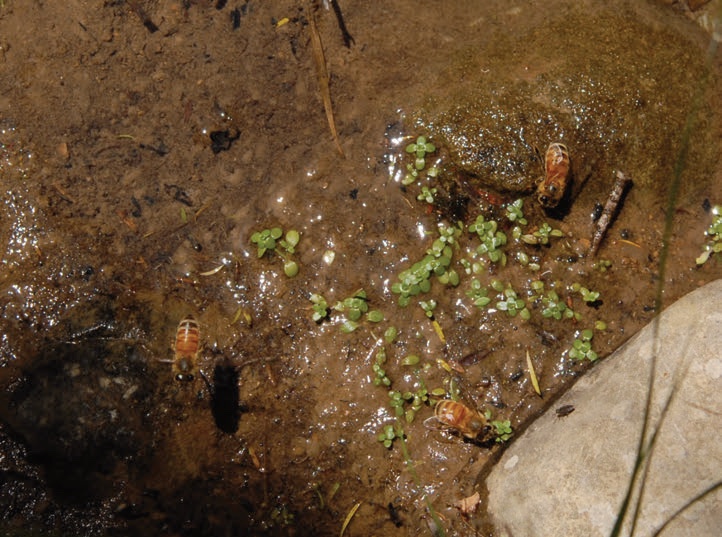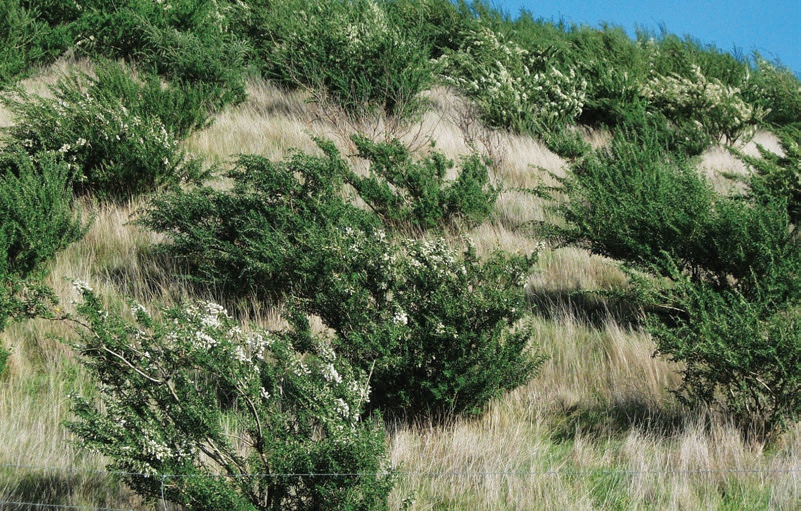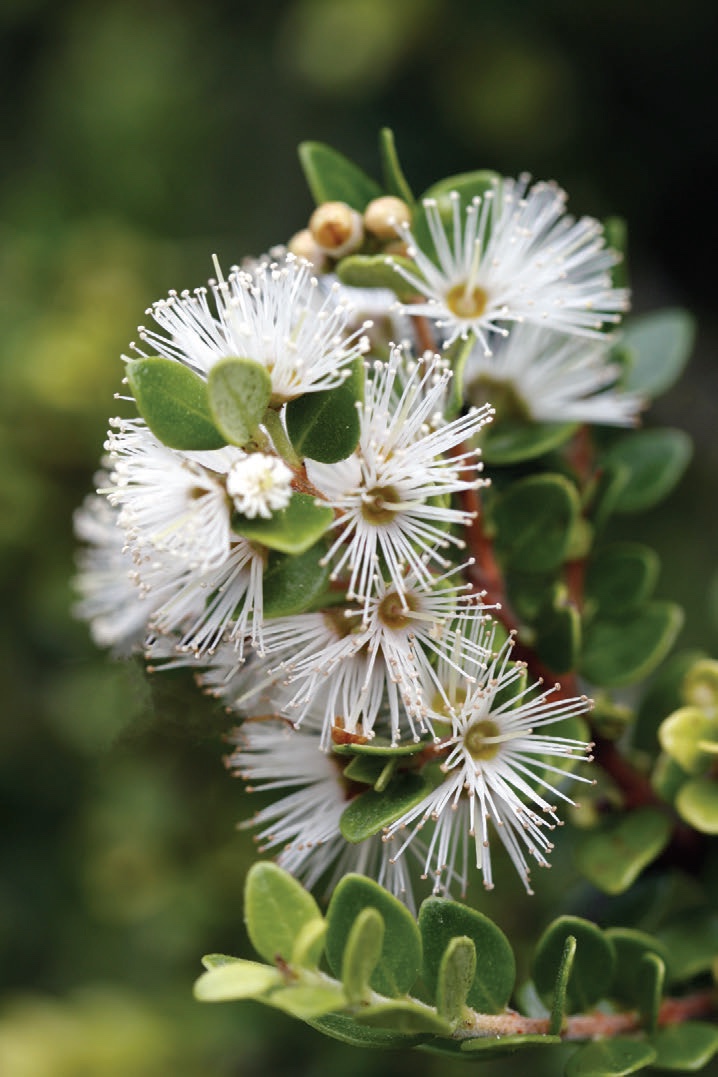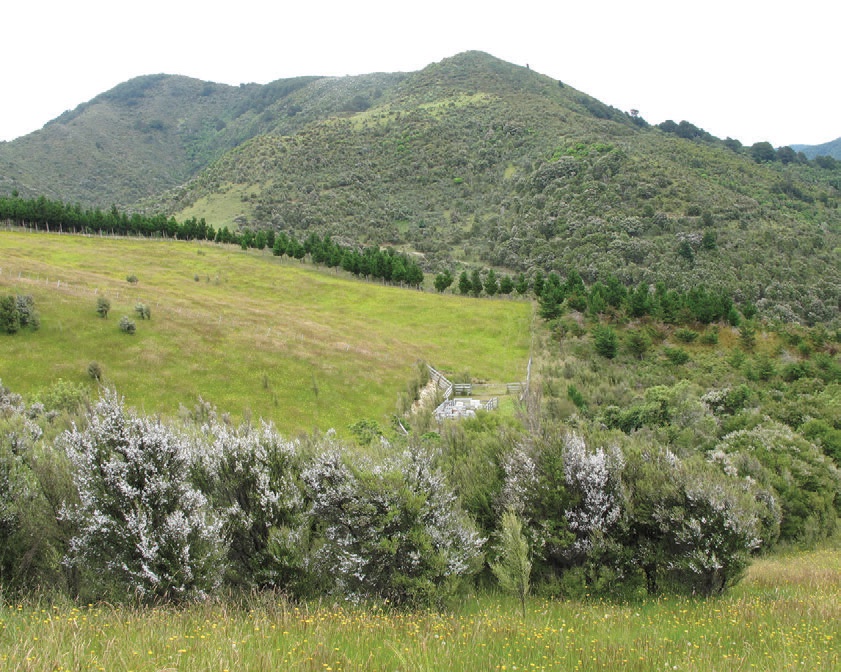The way to a bee’s heart is through its stomach
Murray Mannall, New Zealand Tree Grower August 2012.
This is moment when real men learn to love flowers. Bees need flowers, lots of them. The nectar in the flowers contains sugars for energy, and the pollen provides protein, vitamins, fats, minerals and other goodies. The nectar and pollen combined provides the bees with virtually all of their nutritional needs.
This article discusses ways to attract more bees into your environment by incorporating bee-friendly thinking into your property management and into all of your plantings. This is whether they are for shelter, erosion control, environmental or amenity.
Native and honey bees under threat
Native and exotic bees are the good guys. The long-term future for New Zealand’s native plant communities, and our agricultural and horticultural production, depends on them for pollination. About $3 billion of GDP is directly attributable to bee pollination, and indirectly bees provide far more value with the pollination of clover in pastures and the subsequent nitrogen fixation.
Native and exotic bees are under threat from disease, environmental degradation with the corresponding loss of beneficial plants and plant diversity, the unwise use of certain agricultural chemicals such as nicotinoids, and from other man-made pollutants. There are 27 native bee species which have an essential ecological role in the pollination of native plants. Specific plants have evolved to be pollinated by a small number of these species. If we lose the bees we can ultimately lose the plants. Planting native species is essential for bee habitats, as is leaving some areas bare to provide habitats for the ground-nesting species.
Native and exotic tree and shrub flowers are a significant component of the bee’s food source. However, equally important are the flowers of crop or pasture plants and those of other herbs in non-production areas such as along fence lines and roadsides.

Native parasitic wasps also deserve a mention here too as they are in the same leaky boat as the native bees. They lay their eggs inside other insects such as aphids, so reducing the number of aphids. The more nectar-bearing plants there are available, the longer the adult wasps live and the more aphids bite the dust. Nature at your service.
Bee-friendly management practices
Landowners can use bee-friendly management practices such as not spraying, or being extra careful when using herbicides on fence lines, drains, field edges, roadsides and waste areas. Bees like warmth and shelter, so it helps to have more sheltered areas with flowering plants. The best are planting sites which get plenty of sunlight, are warmed first thing in the morning and face north. Get away from monoculture and enjoy biodiversity.
Helpful exotic species
Exotic multi-use trees for the autumn to spring flowering window include –
- Eucalypt and related species including Eucalyptus camaldulensis, E. cordata, E. globoidea, E. globulus, E. grandis, E. leucoxylon, E. maidenii, E. melliodora, E. pauciflora, E. rodwayi, and Corymbia maculata
- Willows such as matsudana willow, weeping willow and pussy willow
- Tree lucerne or tagasaste, robinia, all apple and pear species.
- Ornamental exotic trees are bottle-brush, horse chestnut and sweet chestnut.
Remember many of these trees also have practical uses for timber, shelter, firewood, and erosion control.

Helpful native species
The bee needs access to pollen and nectar sources all year but the critical time is from late autumn through to late spring. This is when the hive needs supplies to get through winter and then to build up numbers after low winter levels.
 When choosing any plants, be aware what natives are local to your area. For example will the native or exotic plant actually grow on your site, and will it suit the purpose of the planting. The species can be incorporated into shelterbelts or riparian, wetland, erosion control, screening and amenity plantings.
When choosing any plants, be aware what natives are local to your area. For example will the native or exotic plant actually grow on your site, and will it suit the purpose of the planting. The species can be incorporated into shelterbelts or riparian, wetland, erosion control, screening and amenity plantings.
Plants that flower over the key period include lacebark, five-finger, lancewood, kowhai, cabbage trees, ngaio, brooms, coprosmas, kanuka, manuka, matagouri, wineberry, karaka, tree fuchsia kotukutuku, rewarewa, pittosporum species such as kohuhu, lemonwood and karo, kamahi, tawhero, koromiko, and flaxes.
Summer flowering plants
The summer time is when most hives accumulate their food reserves in the form of honey. There are many species they will visit for this purpose. Some have already been mentioned as they start flowering in spring. The main summer flowering species are clover, manuka, rata, pohutukawa, southern beech for the honeydew, viper’s bugloss, borage, lime, various eucalypt species and tawari.
A number of noxious weeds and unwelcome plants are excellent for bee fodder. You would not want to plant these, but even the bad guys have some good in them. They include gorse, sycamore, crack and grey willow, barberry, buddleia, hawthorn, thyme, flowering currant, blackberry, Spanish heath, lantana, Scottish heather and broom.
Information sources
Information has been sources from many areas over the years, and from my own observations. The two main sources are first Smart Farming for Healthy Bees, which can be found at www.treesforbees.org.nz. There are specific plant lists for 10 areas of the country. Trees for Bees is a collaboration between Federated Farmers, Landcare Research, NZ Honey Industry Charitable Trust, Oceania Pollinator Initiative, NZ Plantfinder and various nurseries spread throughout the country including Southern Woods Nursery. The second source is Practical Beekeeping in New Zealand by Andrew Matheson.
Murray Mannall of Southern Woods Plant Nursery is an ex- amateur beekeeper and Canterbury nurseryman


 Farm Forestry New Zealand
Farm Forestry New Zealand

